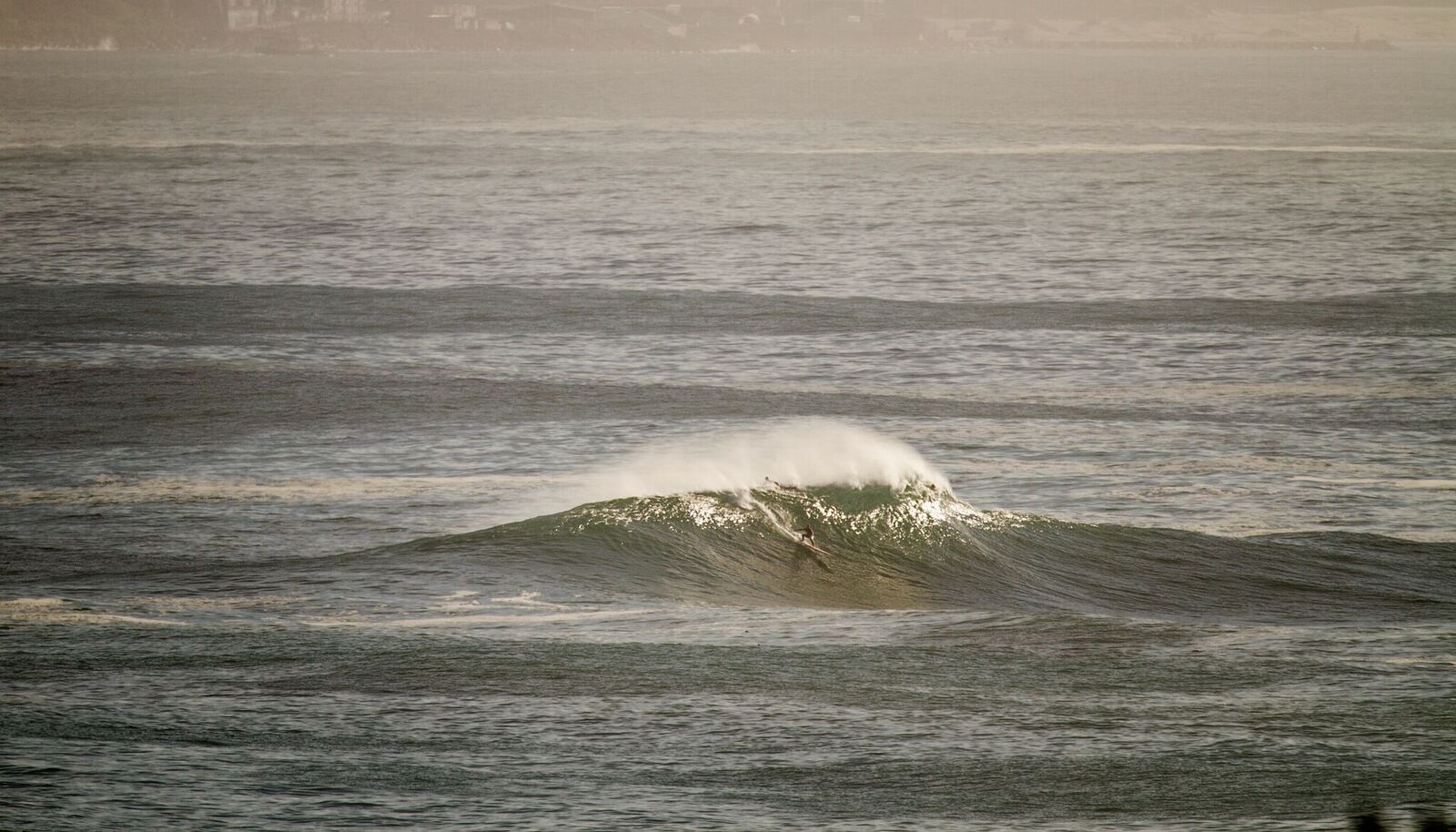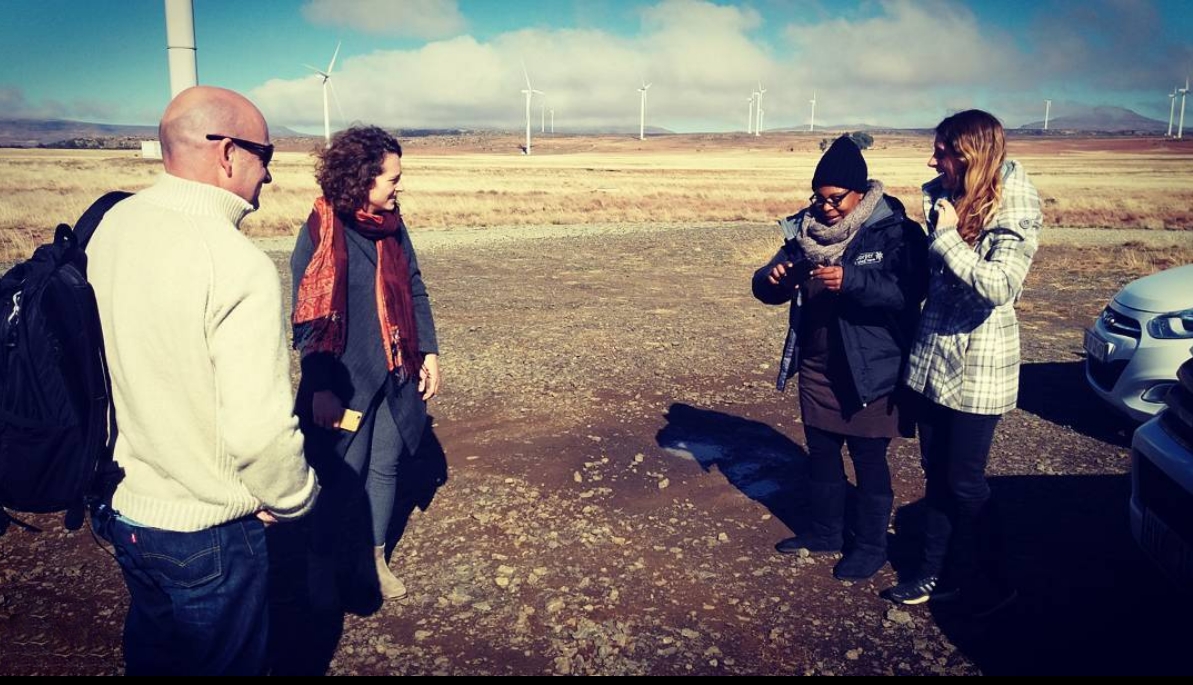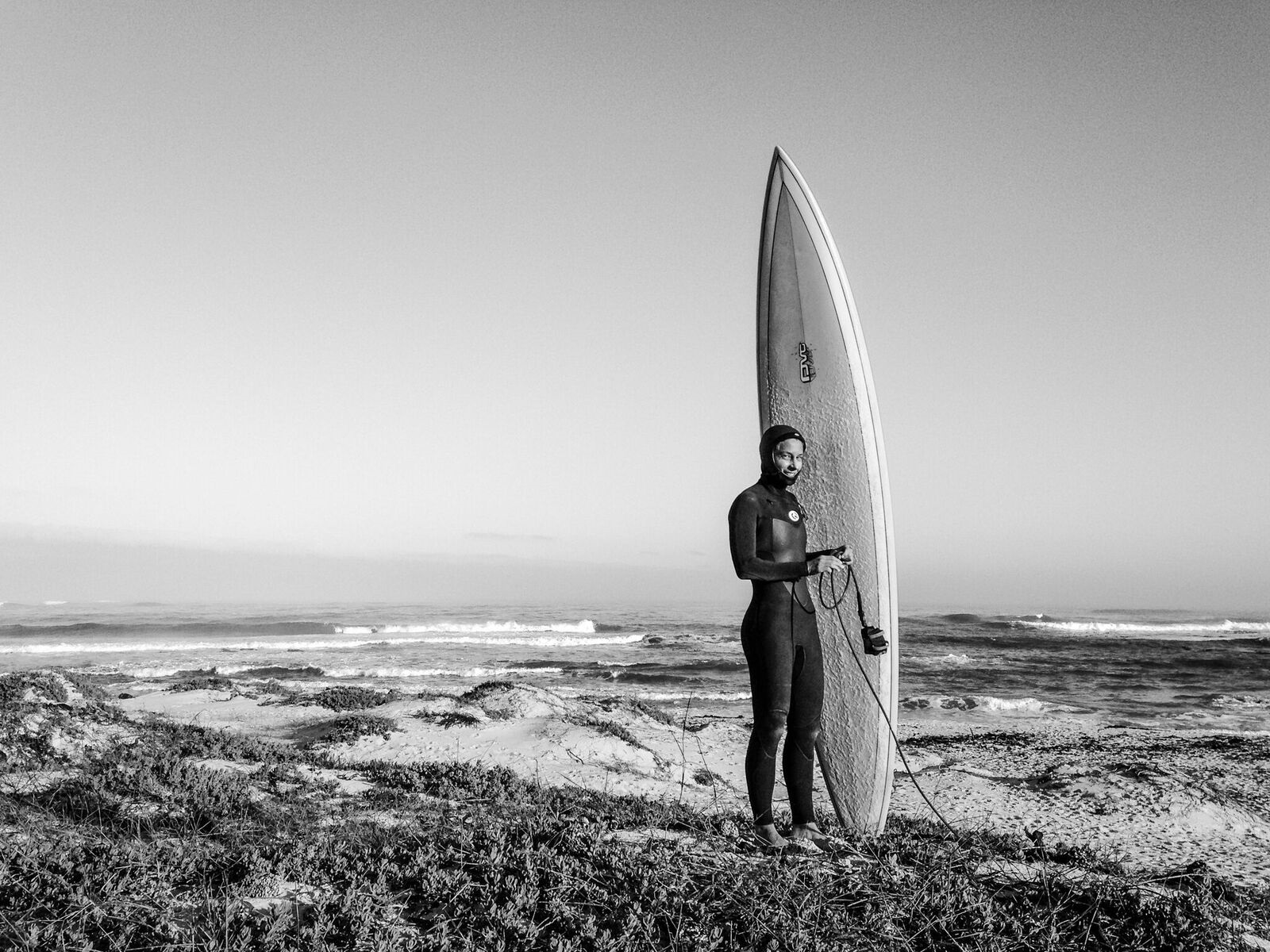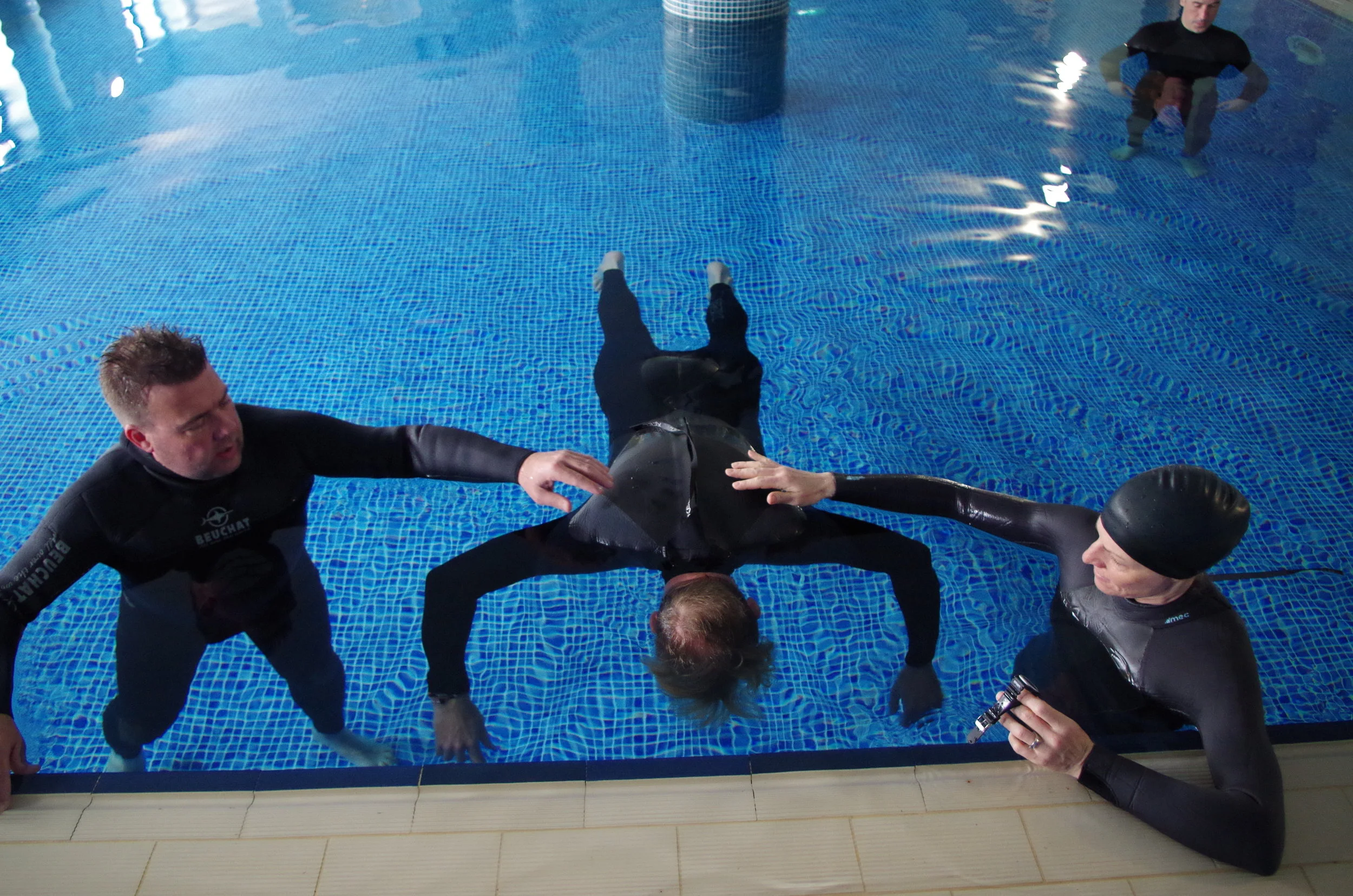Holle & back

When Holle paddled into her second wave at Sunset, a perfect A-frame a few hundred meters away from the better known Dungeons, South Africa, she didn’t know her life would be forever changed. Her road to recovery has pushed her further than any big wave ever has. Two and a half years in, Holle explains why she wouldn’t trade it for the world.
“We had been waiting for Sunset to settle, the jet skis to leave. The line-up was empty besides one surfer whom I knew well. I paddled to the peak and soon got an epic ride…. On the second wave, I stood up a bit too soon with a funny stance. I hit the first few bumps on the face of the wave, did a forward roll off my board and skidded down on my back, before the lip landed right on me, stretching my legs behind my head. That must have been when the tendon in my left leg snapped."
Though Holle grew up in Germany, far from the ocean, she was primed for big wave surfing. In her teens she competed in athletics and trained for the 800 meters to Olympic level until a diagnosis of arthritis forced her to take an early retirement. After trying out surfing in Portugal, she decided to relocate to South Africa for her studies, determined to give her all to her new passion. Starting with shortboarding, she switched to longboarding on the advice of Glen Row, a well-known South African surfer and shaper, who coached her after he’d “noticed that special determination in her eyes”.
“I am a pretty determined surfer, says Holle. I could not help but approach surfing with an athletic focus and used to get super bummed when I could not translate my knowledge into performance in the water.” In 2011, she competed in the 2011 SA Longboard Championships: “I was kicked out in my first heat. I was seriously disappointed, now I had reconnected with my competitive brain.” With frustration and massive swell building in the following days, something boiled over for Holle. She rushed back home to Cape Town, bought herself a second hand semi-gun. As she was starting to believe in herself, the universe aligned: “a few days later, I met Andrew Marr, one of the best big wave surfers in South Africa whom I would surf with a lot over the coming years.”
This gave Holle unprecedented access to the world of big wave surfing, a sport which to this day remains almost exclusively male. “It was an amazing time and I look back on it with gratitude, says Holle. I was blessed with incredible surf trips and insights, opportunities to jump the ‘gender-gap’. Playing in the ‘boys’ zone’ normally requires an invisible ‘special license’ for many women, especially in South Africa”.
“That day at Sunset, It was not uncontroversial for us to surf there. Not only that week, but the years before, we each had our fair share of politics in and out of the water. All social norms and stereotypes can be shifted, but it had taken me a life time to gather that courage”
But Holle still needed to assert her own surfing persona. Moving to Jeffrey’s Bay in 2014 and then to Kommetjie, she started connecting with other women who were into big wave surfing: SA charger Caitlin Moir, who surfs Dungeons ‘for fun’ and Tammy-Lee Smith, who would later be invited to the WSL Pe’ahi Challenge. The three women became close friends, supporting each other in and out of the line-up. They had been surfing together for a week when Holle sustained her injury.
“That day at Sunset, It was not uncontroversial for us to surf there. Not only that week, but the years before, we each had our fair share of politics in and out of the water. All social norms and stereotypes can be shifted, but it had taken me a life time to gather that courage. Many people believed women had ‘no place in these kind of waves’. In a way, this had always appeared more challenging to me than the actual surfing. One could argue that I should have cared less about the politics and concentrated more on my personal preparation, but such narratives were not available to me at the time.”
While she was struggling with gender politics, Holle awoke in hospital with a new reality: race and class politics. “I felt shame and guilt for tapping into all those resources after having consciously decided to ‘throw myself off this cliff’ at Sunset. ‘Spoiled white chick’ was my main thought.”
Her guilt temporarily subsided as she got caught up in a misdiagnosis which gave her the all clear after only four months. As she was trying to train again, Holle felt something was fundamentally wrong. She was eventually rushed into surgery after an MRI found a 12-centimeter gap between her hip and the tendon meant to connect the muscle. Three months in a locked leg brace and intense rehab ensued. Then again, in November 2017, an all clear to surf. A small session in front of her house would be her last. “I went back into surgery and received a donated achilles tendon. It has now been one year since the second surgery and I am allowed three things: do my physio exercises daily at the gym, walk on flat grounds and swim with my arms (legs dragging with a pool buoy)”. Holle was still in excruciating pain until a recent MRI uncovered she had sustained another undiscovered tendon injury in the pelvic area, for which she has now finally received treatment.
“At that point surfing left my life and I felt that I had been given a chance to put my privilege to better use.”
“At that point surfing left my life and I felt that I had been given a chance to put my privilege to better use. I realised I was relieved of the need to position myself on the political arena that surfing represented for me so far: gender politics, race politics, big wave politics (whatever those delineate) and very local politics around access to spots, knowledge, equipment, legitimacy etc… I concluded that this is just fair, after I had spent so long enjoying sports, I owed it to the world to fully apply myself (and my privileged education) to a better and fairer world.”
But how do you transition from identifying as a surfer to becoming a social justice champion?
“Not being able to surf has required a huge professional adjustment. Surfing has always been my personal framework. My professional and surfing networks have huge overlaps. My PhD case studies are scattered along South Africa’s coastline.”
Having been privileged to complete a PhD at the University of Cape Town, Holle is keen to give back and support ‘community benefits in large-scale renewable energy projects’. “I am concerned with questions of who owns energy assets, who benefits from wind and solar projects- and how do we shape energy policies to maximise developmental impact.”
While most people are still grappling with the idea that mitigating climate change is an emergency, Holle has already moved on to the next level: trying to understand the politics of the inevitable rise of renewable energy and the need to empower local communities.
A concept that entirely eludes the surfing industry.
“The surfing industry’s reputation is somewhat protected by the brand image of the ocean. But everything from communication to manufacturing and even event sponsorship is on the wrong side of history, flawed by unsustainable resource management decisions. There are examples of industry codes or standards in other sectors that have driven meaningful changes in practices, but surfing has a long way to go. Effective collaboration and partnerships require resources and leadership.”
“Who will be the first Black female big wave surfer?”
As Holle works on community empowerment around renewable projects, she has also to tackle head-on questions of race inequality, in a country where 9% of the population (whites) own 72% of the private farmland. Unfortunately, the surf industry in South Africa is as timid with race as it is with questions related to the environment or any societal issue.
“Personally, I think sports are an incredible enabler and have vast potential to enhance people’s lives. In post-Apartheid South Africa, surfing has a special role to play, but we still need to overcome the legacy of beach apartheid and further the integration of surfers into contests, surfing associations and their leadership.
The tide is turning slowly though and for the first time we have had a person of colour becoming national champ in 2017 (Brandon Benjamin) and Michael February joined the CT this year. Who will be the first black female big wave surfer?”
“It has been a hell of a ride so far and I miss surfing and moving actively every single day. However, I also wouldn’t want to miss what I have been through.”
Applying her skills to making a difference helps Holle overcome some of the challenges of recovery, but not all.
“After being injured for two years and battling through the same rehab process for the second time, enduring constant pains, I hit rock bottom. My colleagues sat me down as they were worried that I would collapse.”
Being able to share her experience with athletes who faced PTSD and early retirement was decisive in allowing her to say the words “I will not be making a return to surfing” without disintegrating. “I find the entire mental health field related to action sports fascinating. In South Africa, we are a small group of surfers who had bad wipeouts and who find it helpful to chat about the ways life has changed since. I’ve been in touch with Imke Leerink in the Netherlands who crashed skateboarding and Mercedes Maidana who had a big wave accident in Hawaii.”
All in all, would Holle take back that fateful day?
“At this point, I am looking at another year of careful physio. I hope to be regaining the ability to run again towards the end of 2019. Brainstorming ‘safe’ sporting endeavours is fun, but there is little scope to push the limits safely. Having lived ‘on the other side’ for so long, I have become more conservative and my priorities have shifted. Nevertheless, I do have a secret plan for something that I would like to try but my physio and I still need to negotiate that further. It has been a hell of a ride so far and I miss surfing and moving actively every single day. However, I also wouldn’t want to miss what I have been through. In some bizarre way, in waking up to life again I have a renewed strength. I just don’t have a name for it yet.”
Can we suggest one that still eludes most humans and that we believe Holle has found: PURPOSE.
Follow Holle on Instagram
📷: main, 1: Grant Scholtz; 2 & 3 courtesy of Holle Wlokas
Chief Storyteller at Swellbound








